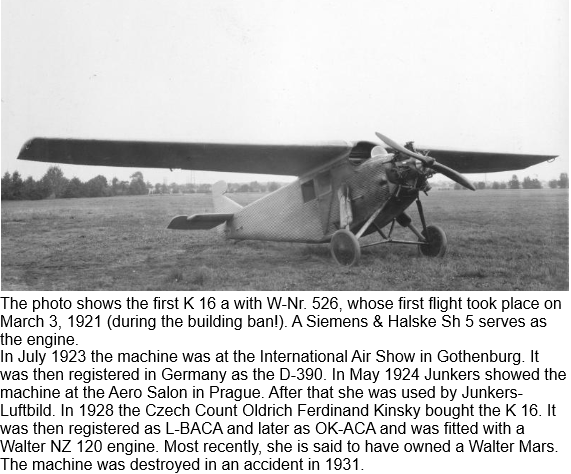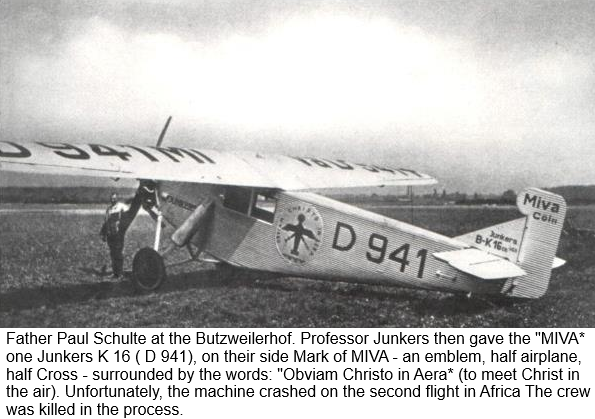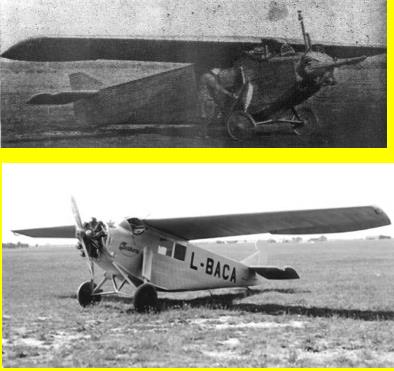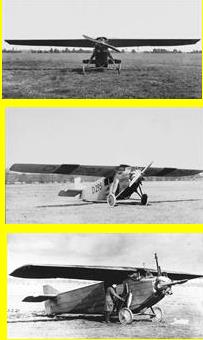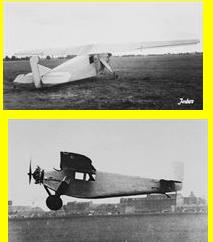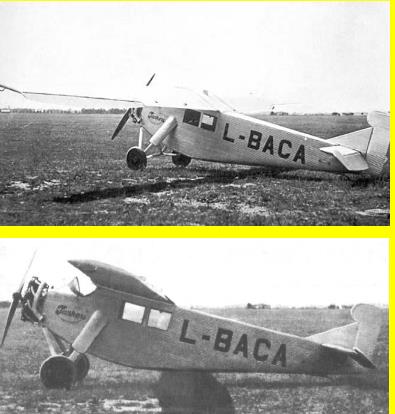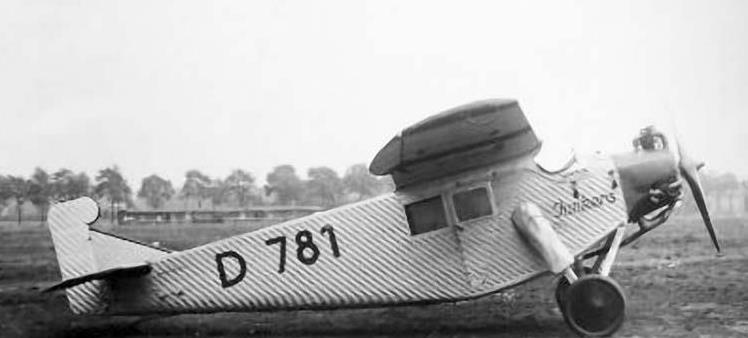The Junkers K 16 was a small airliner produced in Germany in the early 1920s. It was a conventional, high-wing cantilever monoplane of all-metal construction, equipped with fixed, tailwheel undercarriage. The pilot sat in an open cockpit, while the two passengers were provided with an enclosed cabin within the fuselage. Shortly after the prototype flew, aircraft production in Germany was brought to a complete halt by the Allies, and the K 16 was quickly evacuated to the Netherlands to avoid confiscation. There, it was stored by Fokker until the restrictions were relaxed and work recommenced at Junkers' Dessau factory in 1924. By this time, however, the airline niche that the tiny K 16 had been intended to fill no longer existed, and the small number that were produced were mostly sold to private owners. Junkers entered two K 16s in the 1925 Deutsche Rundflug, with one machine winning second place in the competition. A total of 17 aircraft were built. A few of them were also used as private aircraft. It seems, as if all K16 serial produced aircraft were built in 1925.
K 16 - initial version with Siemens-Halske Sh 4 engine, later changed to Sh 5
K 16a - modified undercarriage and rear fuselage (modified from prototype)
K 16b - production versions with new wing and a variety of engine choices:
K 16ba - Siemens-Halske Sh 5 engine
K 16bi - Siemens-Halske Sh 20 engine
K 16bo - Walter NZ 120 engine
K 16c - as K 16b but with modified nose section to accommodate engine change
K 16ce - Bristol Lucifer engine
The pilot's seat was located behind the wing. Therefore the pilot had a bad view towards the ground. Also the Mercedes IIIa engine was not allowed by the Allied restrictions for aircraft used in Germany. Reuter therefore started a complete new design, which was equipped with smaller Siemens Sh4 engine. This engine was much smaller than the Mercedes IIIa and now Reuter and Pinkert were able to locate the pilot seat in the front of the aircraft. The new design was designated J16, but was later renamed as K16 (K=Kabinenflugzeug / cabin aircraft). On March, 3rd 1921 the K16 prototype (c/n 526) was first flown by Zimmermann. When the Allies stopped the complete German aircraft industry in March 1921, the K16 prototype was flown to the Netherlands, to prevent its confiscation. Together with the J15, the K16 prototype was stored there by Fokker until summer 1923. The aircraft is transfered to International Aviation Exhibit at Gothenburg in July 1923. In spring 1924, the prototype underwent several modifications at Dessau. First a new undercarriage and a more aerodynamic rear fuselage was introduced, as well as a stronger Siemens Sh5 engine. This version was called K16a. In a second step the prototype got a new wing and was called K16ba. Several engine versions became available for the b-series.
| Type |
1 + 2 seat passenger plane |
a 1 + 2 seat passenger plane |
ba 1 + 2 seat passenger |
| Engine |
1 Siemens Sh 4, later Sh 5 |
1 Siemens Sh 5 |
1 Siemens Sh 5 |
| Dimensions |
Length 8,00 m, height 2,75 m , span 11,00 m, wing area 16,50 m2 |
Length 8,00 m, height , span 12,80 m, wing area 19.00 m2 |
| Weights |
Empty 430 kg, flying weight 712 kg |
|
Empty 535 kg, flying weight 850 kg |
| Performance |
Max.. speed 145 km/h , cruising speed , range 600 km, endurance , service ceiling , climb |
|
Max. speed 170 km/h, range 600 km |
| Type |
bi
1 + 2 seat passenger plane |
bo
1 + 2 seat passenger plane |
ce
1 + 2 seat passenger plane |
| Engine |
1 Siemens Sh 12 |
1 Walter NZ-120 |
1 Bristol Lucifer |
| Dimensions |
Length 8,00 m, height , span 12,80 m, wing area 19,50 m2
|
| Weights |
Empty , loaded , max. take off weight |
|
| Performance |
Max.. speed , cruising speed , range , endurance , service ceiling , climb |
|
